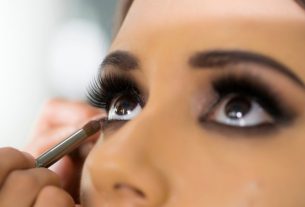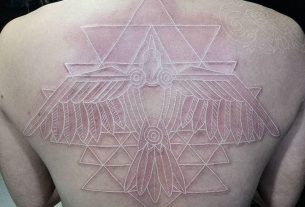Orthognathic surgery is a surgery indicated for the correction and repositioning of the jaw and/or jaw bones, in cases of congenital problems, obstructive sleep apnea, facial fractures or temporomandibular disorders, for example, in addition to being performed for aesthetic purposes to leave the more harmonious face.
This surgery may be recommended by a maxillofacial surgeon or dentist when there is difficulty chewing or speaking. It is performed under general anesthesia and the recovery time varies according to the procedure performed, generally lasting 6 to 12 months.
Orthognathic surgery is made available free of charge by the SUS when it aims to solve health-related problems that are being caused by the position of the jaw. If performed for aesthetic purposes, the surgery must be performed in private clinics.

When is it indicated
Orthognathic surgery is indicated for:
- Congenital problems with the jaw or cleft palate;
- Dental malocclusion, due to problems with the facial bones;
- Cross or open bite;
- Facial fractures;
- Facial cysts or tumors;
- Obstructive sleep apnea;
- Temporomandibular dysfunction;
- Microssomia hemi-facial.
Furthermore, orthognathic surgery may be indicated for the treatment of some syndromes that affect speech and chewing, in order to correct the positioning of the jaw, as in the cases of Apert, Crouzon, Treacher Collins or Pierre Robin syndromes, for example. .
Orthognathic surgery allows you to correct maxillofacial deformities that cannot be corrected with other forms of treatment.
Furthermore, orthognathic surgery can be indicated as surgery to prepare for the placement of dental prostheses, in order to improve tooth reconstruction, make prosthetic rehabilitation possible, and allow functional dentition and aesthetics.
Another indication for orthognathic surgery is aesthetic, to make the face more harmonious and symmetrical.
Don’t ignore the signs your body is giving you!
Types of orthognathic surgery
Depending on the position of the jaw and teeth, the surgeon may recommend two types of surgery:
- Class 2 orthognathic surgerywhich is performed in cases where the upper jaw is too far in front of the lower teeth;
- Class 3 orthognathic surgerywhich is used to correct cases in which the lower teeth are too far ahead of those in the upper jaw.
If changes in jaw growth compromise breathing, rhinoplasty can also be performed to improve air passage.
How to prepare for surgery
Some precautions are important to prepare for orthognathic surgery, such as clarifying any doubts about the surgery and recovery with the surgeon.
In addition, you must inform all medications, vitamins and nutritional supplements that you frequently take, as some may affect recovery, interfere with anesthesia or increase the risk of clot formation or bleeding. You must also inform if you have any allergies or other health problems.
It is also recommended not to smoke or consume alcoholic beverages before surgery, in addition to having a more liquid diet the day before surgery, giving preference to water, soup, teas and natural gelatin, as they do not require chewing.
Before performing the surgery, the surgeon will request exams for planning the surgery, such as panoramic X-rays, computed tomography of the face and photographs of the teeth and face, in addition to taking a mold of the teeth.
Other tests before surgery that may be requested are surgical risk and blood tests to assess general health.
How it is made
Orthognathic surgery is performed by the oral and maxillofacial surgeon at the hospital, with some steps being followed to carry out the procedure, such as:
- Use of orthodontic appliances, as indicated by the orthodontist, for at least 1 year before surgery, so that the position of the teeth is corrected depending on your bone structure. In some cases, it may also be necessary to remove some teeth;
- Computerized simulation of surgeryafter the period of use of the orthodontic device, with the aim of visualizing the final result of the procedure, including the aesthetic results, so that the surgery can be performed;
- Performing the surgeryand before starting it, saline solution is administered into the vein, by the nurse, to hydrate and administer medications and also for the anesthetist to perform general anesthesia;
- Jaw repositioning, through a surgical procedure that is carried out inside the mouth, leaving no scar on the face. However, in some cases, a small cut on the face in the jaw area may be necessary;
- Jaw fixationusing small screws or plates inside the gums.
After surgery, you must continue to use the orthodontic device for at least 3 to 9 months, and the doctor or dentist may also recommend dental implants or other aesthetic treatments.
What is recovery like from surgery?
Recovery from orthognathic surgery can last between 6 to 12 months, but generally, the person returns home 1 to 2 days after surgery with painkillers prescribed by the doctor, such as paracetamol, to relieve pain, and antibiotics to prevent infection.
Furthermore, it is still important to take some precautions such as:
- Take the medicine at the right times as indicated by the doctor;
- Rest for the first 2 to 4 weeksavoiding going to work or school;
- Apply cold compresses to the face in the first 24 hours after surgery, for 10 to 20 minutes, several times a day, to help reduce swelling;
- Eat a liquid or pasty diet in the first 3 months or as recommended by the doctor;
- Avoid effortsnot exercising and not being exposed to the sun;
- Avoid smokingas it can interfere with healing and increase the risk of infection;
- Use a soft toothbrushand avoid brushing your teeth too intensely;
- Perform lymphatic drainage on the face to reduce swelling. See step by step how to perform lymphatic drainage on your face at home.
In addition, it is recommended to undergo physiotherapy, which can be started 1 or 2 days after surgery, or as approved by the doctor. Initially the objective should be to reduce pain and local swelling, but after about 15 days, if healing is good, you can focus on exercises to increase movement in the temporomandibular joint and facilitate opening of the mouth, making chewing easier.
Lymphatic drainage can help reduce facial swelling and can be done in every session.
Possible risks of surgery
The main risks of orthognathic surgery are loss of sensitivity in the face, a feeling of numbness in the cheeks or lips, bleeding from the mouth or nose, infection at the site where the cuts were made, or damage to the teeth.
Furthermore, as in all surgeries that use general anesthesia, postoperative complications may arise such as nausea, vomiting, drop in blood pressure, chills, or tremors, for example.
Warning signs to go back to the doctor
It is important to consult the surgeon or go to the nearest emergency room if symptoms arise, such as:
- Fever greater than 38ºC;
- Difficulty breathing;
- Severe pain or pain that does not improve with medication;
- Presence of secretion or pus at the site of the scar;
- Redness, swelling or tenderness in the scar;
- Persistent vomiting or diarrhea;
- Bleeding that does not improve.
These symptoms must be evaluated by the doctor immediately to evaluate and recommend the most appropriate treatment.

Sign up for our newsletter and stay up to date with exclusive news
that can transform your routine!
Warning: Undefined array key "title" in /home/storelat/public_html/wp-content/plugins/link-whisper-premium/templates/frontend/related-posts.php on line 12
Warning: Undefined array key "title_tag" in /home/storelat/public_html/wp-content/plugins/link-whisper-premium/templates/frontend/related-posts.php on line 13



